Teach close reading skills, religious symbolism, and the Peninsular War with Francisco Goya’s The Third of May 1808
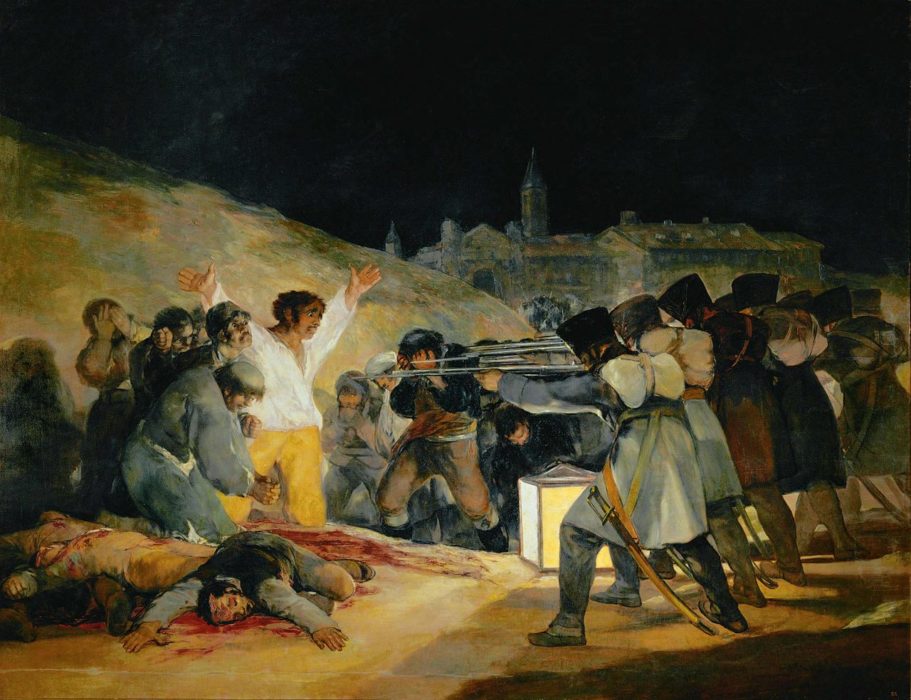 Goya’s The Third of May, 1808 is in the Museo del Prado’s collection. See their website for detailed information. Click on the painting for a high quality image that can be magnified.
Goya’s The Third of May, 1808 is in the Museo del Prado’s collection. See their website for detailed information. Click on the painting for a high quality image that can be magnified.
Under the guise of reinforcing the Spanish armies, 23,000 French troops entered Spain unopposed in November 1807. Even when Napoleon’s intentions became clear the following February, the occupying forces found little resistance apart from isolated actions in disconnected areas, including Saragossa. Napoleon’s principal commander, Marshal Joachim Murat, believed that Spain would benefit from rulers more progressive and competent than the Bourbons, and Napoleon’s brother Joseph Bonaparte was to be made king. After Napoleon convinced Ferdinand to return Spanish rule to Charles IV, the latter was left with no choice but to abdicate, on March 19, 1808, in favor of Joseph Bonaparte.
Although the Spanish people had accepted foreign monarchs in the past, they deeply resented the new French ruler. On May 2, 1808, provoked by news of the planned removal to France of the last members of the Spanish royal family, the people of Madrid rebelled in the Dos de Mayo Uprising. A proclamation issued that day to his troops by Marshal Murat read: “The population of Madrid, led astray, has given itself to revolt and murder. French blood has flowed. It demands vengeance. All those arrested in the uprising, arms in hand, will be shot.” Goya commemorated the uprising in his The Second of May, which depicts a cavalry charge against the rebels in the Puerta del Sol square in the center of Madrid, the site of several hours of fierce combat. Much the better known of the pair, The Third of May illustrates the French reprisals: before dawn the next day hundreds of Spaniards were rounded up and shot, at a number of locations around Madrid. Civilian Spanish opposition persisted as a feature of the ensuing five-year Peninsular War, the first to be called guerrilla war.
— this excerpt from Wikipedia describes in part the historical events that inspired Goya’s The Third of May 1808, a painting he undertook to demonstrate his loyalty to Ferdinand VII, the new King of Spain who launched a reign of terror against those who had supported the French occupiers
Look at The Third of May 1808. Before reading the excerpt above, tell students the title of the piece and ask what is going on in this picture? While students may not know about Napoleon’s invasion of Spain or the Peninsular War, this painting explores themes and images that may be familiar to students. See how much they can decipher through a group discussion. Encourage students to identify the evidence that supports their reasoning. Students should likewise be encouraged to share wonderings and voice confusions. As the conversation slows, explain you are going to read an excerpt from a Wikipedia post that describes some of the historical events that inspired the painting. After reading the excerpt ask how does this new insight change your understanding of the painting? What additional things do you see now?
Begin with art history
Francisco de Goya was born in 1746 in a village in northern Spain. At the age of 14 he began his study of art when he was apprenticed to a local painter. He established his artistic reputation by painting religious frescoes and royal tapestries. In time he became a portrait painter to the Spanish aristocracy and by the age of 43 he was named a court painter.
While his professional career flourished, Goya faced a series of personal setbacks. Only one of his seven children lived beyond infancy. In 1792 Goya suffered an illness that caused him to become deaf which left him isolated and withdrawn. This mental and physical breakdown resulted in work that became increasingly paranoid, dark, and fixated on fantasies. In 1808 French forces invaded Spain, leading to the Peninsular War. Sickened by the war’s atrocities, Goya explored the absurdity and brutality of human nature in a series of disturbing prints known as the Disasters of War.
Even though Goya enjoyed the prestige of being a celebrated court painter, tumultuous shifts in political power accompanied by reigns of terror caused him to live a precarious existence. For example, his portraits of the intruding French monarchy branded him a traitor by some, an especially dire charge. His monumental and iconic history paintings The Second of May 1808 and The Third of May 1808 were in part created to demonstrate his loyalty to the restored Spanish monarchy. In these paintings Goya commemorates the populist uprising against Napoleon’s occupying armies.
The Third of May 1808 represents a dramatic departure from the conventions of history painting. Instead of glorifying military leaders waging battle for a higher cause, The Third of May 1808 shows the military as an occupying force attacking a defenseless civilian population. Instead of offering a sanitized, bloodless view of warfare, Goya focuses on the savagery and gore of war and highlights the emotional distress and anguish of its victims. Rather than valiantly sacrificing his life in a noble gesture, Goya’s hero is summarily executed on his knees with his comrades cowering around him. Goya likewise tweaks the tradition of painting Christian martyrs, commemorating instead the sacrifice of commoners at the callous hands of other humans. The use of expressive brushstrokes suggest Goya drew on his emotions and personal feelings as much as historical events. The stylistic treatment and the subject matter of The Third of May 1808 marked a revolutionary break in the history painting tradition that would influence generations of artists to come.
Look like an art critic
This image from the Museo del Prado lets you to magnify the painting and analyze the figures and Goya’s expressive brush strokes. Thank you Museo del Prado for the exquisite detail!
Light
Point out and discuss: In The Third of May 1808 Goya uses light as a compositional device to organize and cluster elements of the painting. His use of light also reinforces his intentions. How does Goya use light to organize the elements in his painting and express his intentions?
Turn, Talk, and Report Back (Possible answers: The only source of light for the scene is a box lantern that sits between the soldiers and the unarmed citizens. The light from the lantern creates a hard diagonal line that organizes the figures in two groups—the innocent citizens in the light and the evil soldiers in the shadows. The light allows you to see the fear and anguish of the men to be executed. It allows you to see them as individuals. The soldiers in contrast do not have facial features the viewer can identify with. You only view them from the back, and even then they are so tightly grouped together with a hard contour line unifying them that they almost appear to be a single menacing form. The reflected light off the soldiers’ bayonets and rifle barrels accentuates their weaponry and savagery and points at the victims. The lack of stars in the sky or other heavenly objects underscores the darkness and depravity of the scene and makes the viewer concentrate more on what is illuminated. Throughout art history light is oftentimes used to signify the divine. Goya seems to be celebrating these martyrs in the same divine light.)
Religious Symbolism
Point out and discuss: Goya began his art career with religious-based work ranging from small devotional pieces to large frescoes. While he abandoned overt religious themes when he became a court painter, he seeded his work with Christian iconography. What religious symbolism do you see in The Third of May 1808 and how does this symbolism support Goya’s intentions?
Turn, Talk, and Report Back (Possible answers: The central figure wears a bright white shirt the color of purity and religious rituals such as weddings and baptisms. The lantern concentrates light on the man and the wall behind him, bathing him in a spiritual glow. His raised arms mirror the pose of Jesus on the cross. The mark on his right hand looks like a stigmata, a wound that corresponds to those left on Jesus’ body by the Crucifixion. He kneels, arms and hands raised in a prayerful pose, offering himself up as a martyr. A holy man kneels before him as much praying to him as praying for him. By making the central figure Christ-like, Goya elevates the stature of the common men and glorifies their sacrifice.)
Compare Goya’s The Second of May 1808 with his The Third of May 1808
Point out and discuss: Goya painted both paintings in 1814 on the eve of Ferdinand VII return to the Spanish throne. The Second of May 1808, also known as The Charge of the Mamelukes, depicts the street fighting that ensued when the Mamelukes, a fierce band of Muslim fighters in Napoleon’s French Imperial Guard, attacked protesters who were trying to stop the removal of the Spanish royal family from Madrid. While their simple knives were no match to the advanced weaponry of this cavalry charge, the protestors did not flee, rather they held their ground and fought back, momentarily winning the battle. By nightfall, the French troops had regained control and on the morning of May 3 they exacted their revenge by executing citizens swept up in the riots. How are these painting different and how do these contrasting perspectives compliment and reinforce Goya’s intentions?
Turn, Talk, and Report Back (Possible answers: The Second of May shows the populist in glorious revolt. The sun is shining and they are winning the battle. The Third of May in contrast depicts the brutal oppression of the citizenry in the darkness of night. The earlier painting shows the fight in the city’s center, while the latter image shows the killings on outskirts of town. One depicts wildly emotional mayhem, while the other shows orderly, robotic murder. Together, these paintings depict the courageous fortitude and the unspeakable sacrifice of the Spanish people. Neither painting can tell the full story of the insurrection the way they do together. With both paintings measuring the same 8 feet, 9 inches by 11 feet, 4 inches these form an epic diptych to the Spanish people.)
Think Like an Artist
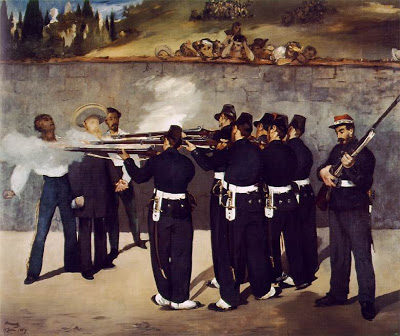
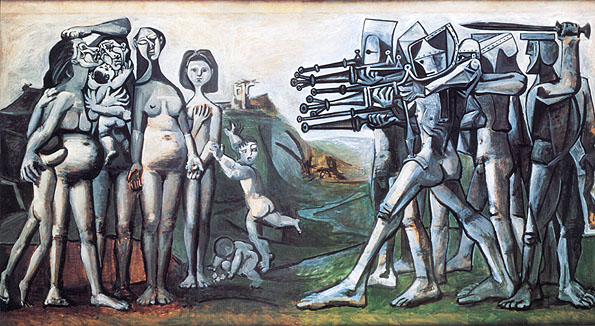
Through their art, artists across generations talk to and inspire each other. Goya’s The Third of May 1808 inspired Edouard Manet’s The Execution of Emperor Maximilian (1868) 50 years later and Pablo Picasso’s Massacre in Korea (1951) more than a century later. By drawing on Goya’s composition and subject matter, Manet and Picasso reinforce an iconographic tradition that laments the carnage and cruelty of war. While the victims and perpetrators change, the underlying sentiment prevails. This may be especially unsettling for viewers whose political or nationalistic affiliations may cause them to shift their allegiances from one side of the composition to the other.
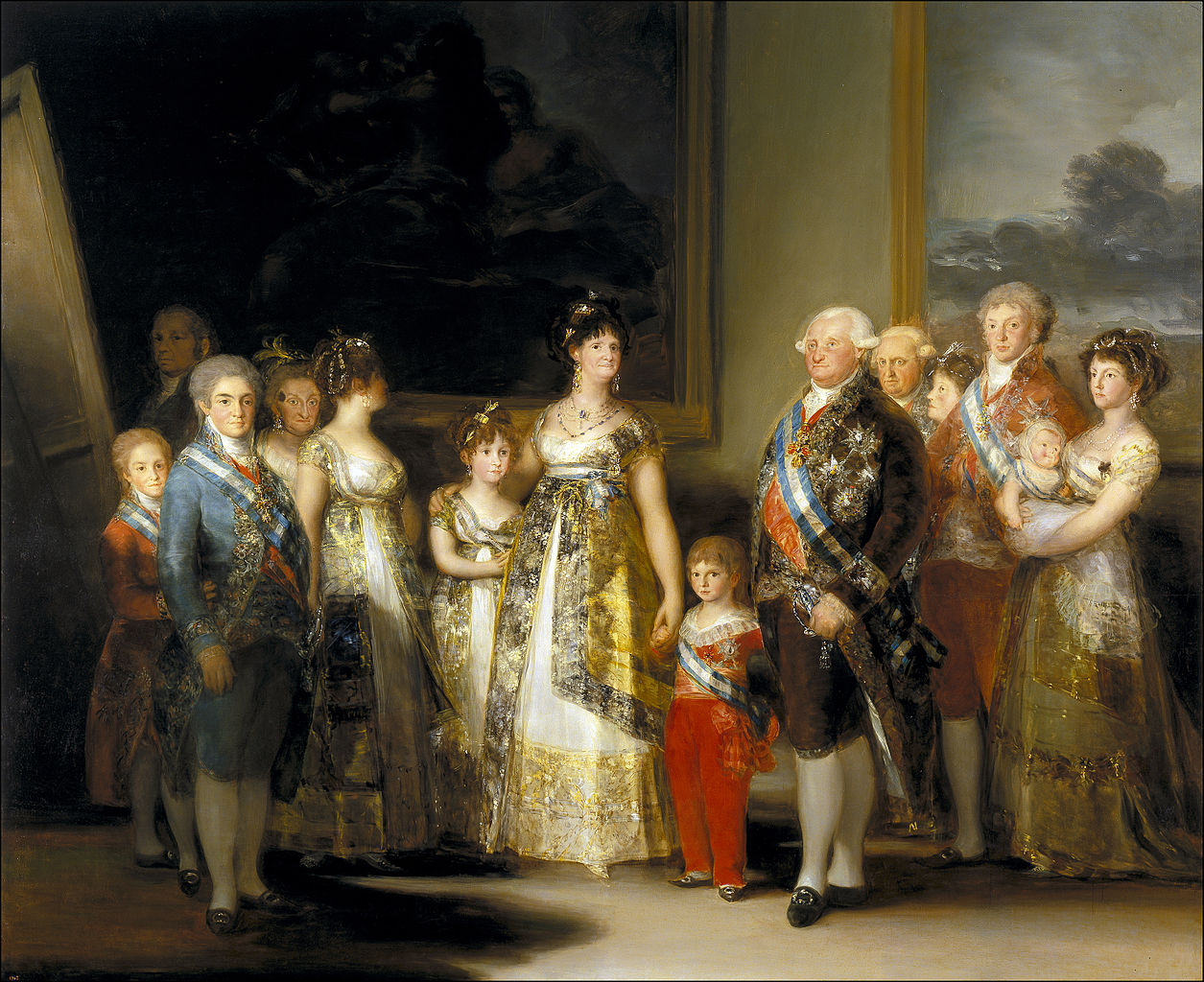
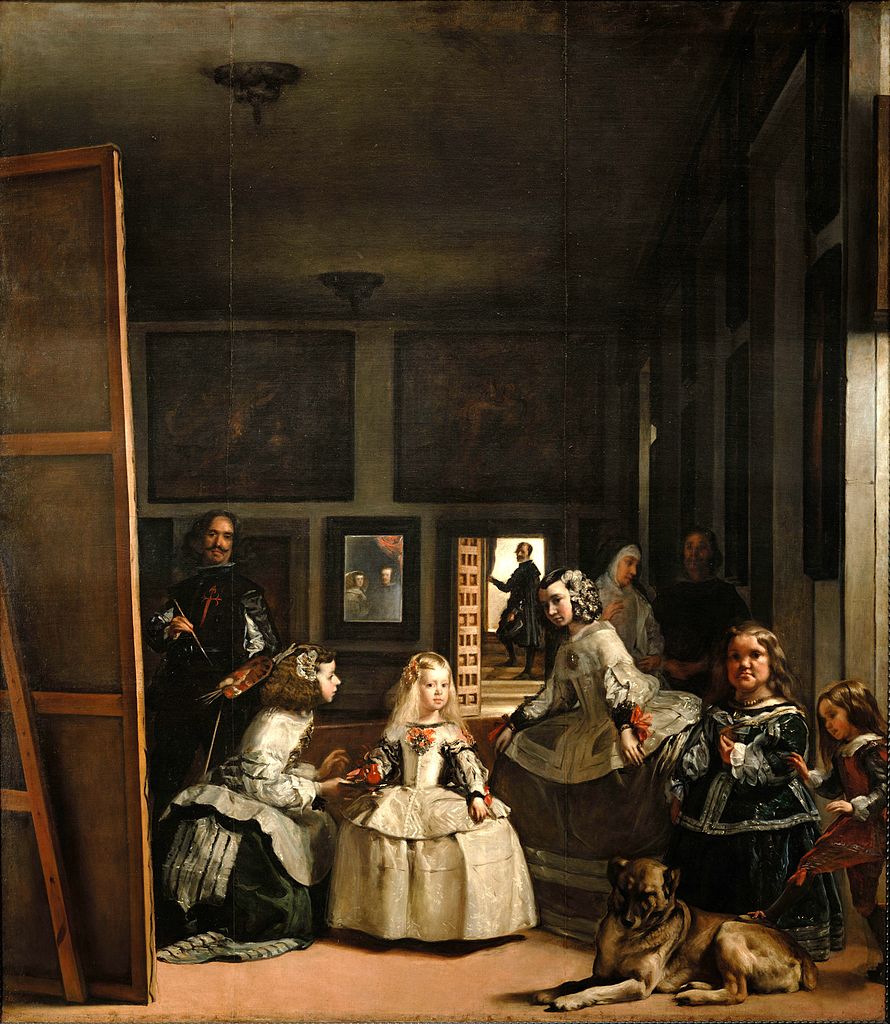
Goya in turn found inspiration in the works of past masters. As he explained, his teachers were “nature, Rembrandt, and Velasquez.” A court painter more than a century before Goya’s time, Velasquez offered both professional and artistic inspiration. Goya’s painterly approach to royal portraiture and his ability to capture elegance and realism builds on Valesquez’ character studies. Goya’s Charles IV of Spain and His Family (1801) is as much an homage to Valesquez and his iconic Las Meninas (The Ladies in Waiting, 1656) as it is a portrait of the royal family. (Note the compositional parallels including the placement of the artists in the background on the right.)
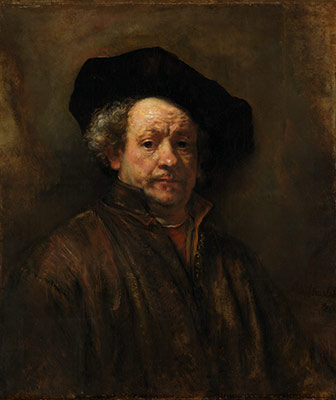
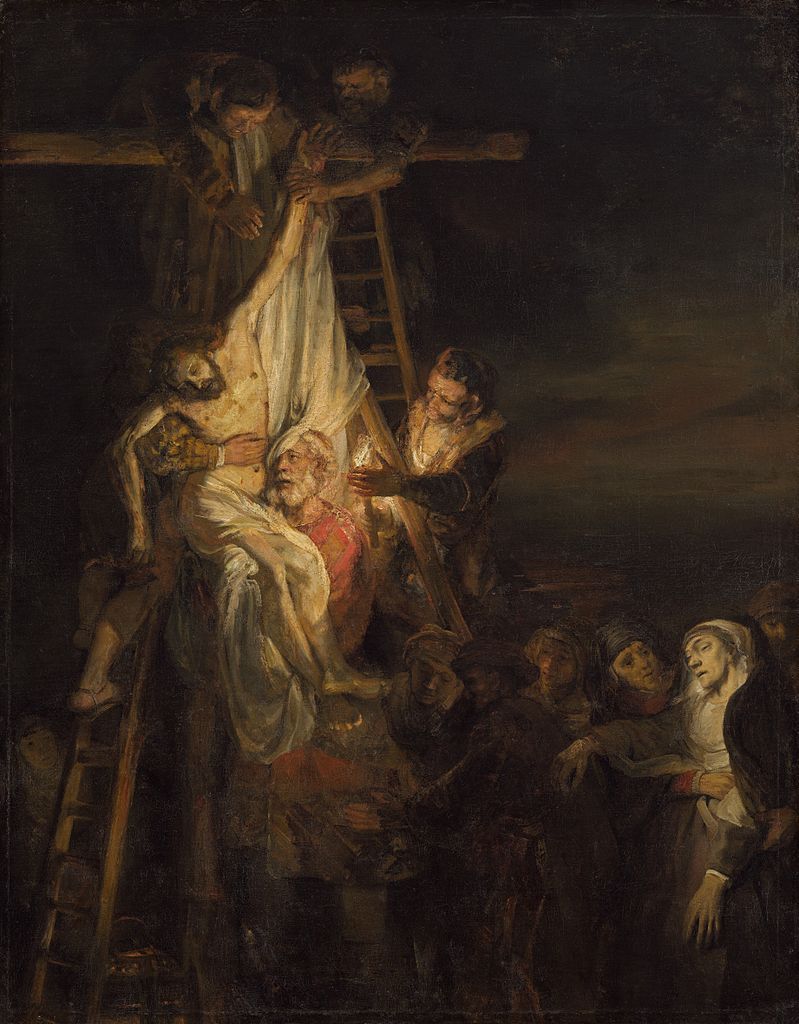

Likewise, Goya’s dark tonalities, fluid brushstrokes, and Christian iconography draw upon Rembrandt’s characteristic style, especially paintings such as The Descent from the Cross (1634) and The Slaughtered Ox (1655).
Goya offers a great example of how master artists draw on the past and set the stage for the future work. Their work exists within aesthetic and intellectual family trees. Pick a work of art that you especially identify with and draw the genealogy of its family tree. This will both broaden your perspective and surround you with more kindred spirits.
Life Lesson
If you are going to walk on thin ice, you might as well dance. While Goya secured the prestigious and enviable position of court painter, his existence was precarious. Dramatic shifts in political power, especially while serving autocrats who were both corrupt and punitive, exposed Goya to dire charges of disloyalty. His liberal leanings and his revolutionary approach to art during Spain’s inquisition subjected Goya to censorship and charges of heresy. In addition, the infighting and jealousy of other aspiring artists likewise made Goya vulnerable, especially during his serious illnesses and long convalescences. All of this hardly seems like an environment conducive to creative expression and risk-taking, yet that is what Goya did. Throughout his long career Goya experimented wildly with a range of subjects, styles, and media. Goya seemed to embrace the idea that if you are going to take a chance, do it with confidence and style. If you are going to walk on thin ice, you might as well dance is a motto favored by many creatives. Challenging the status quo is not for the faint of heart, but if you have found something worthy of taking a stand, you might as well do it with flair and panache.
Related Video
- Art historical analysis (painting) a basic introduction using Goya’s Third of May 1808 (10:39) is a Smarthistory video where Dr. Stephen Zucker and Dr. Beth Harris discuss how to unpack Third of May 1808 by analyzing its formal properties, subject matter, and historical context. This is very comprehensive and a bit sophisticated so you may want to share late in the lesson after students have developed their own perspectives.
- Arts in Culture: Romaticism: Goya’s Third of May (2:53) offers a concise analysis of the painting’s formal elements.
- Romantics & Realists: Goya (48:59) is a comprehensive documentary on Goya’s life and work.
- Goya Exposed with Jake Chapman BBC Documentary 2016 explores the sinister underbelly of Goya’s Disaster of War prints through the eyes of a contemporary artist who appropriates Goya’s imagery. This is edgy and sophisticated, so consider your audience. These are reminiscent of Ron English’s Guernica paintings.
Integrating into Your Curriculum
Artists oftentimes use common visual strategies or signposts to alert viewers to significant details in their art. Here are some ideas for using these visual signposts to unpack a work of art. Remember, the close reading skills in art appreciation are similar to the close reading practices taught in reading.
Literature Links: What piece of literature would you partner with The Third of May 1808? While there is considerable literature on the era of Napoleon and his military campaigns, there is a paucity of literature about the Spanish partisans. That may be understandable with the violence and brutality of the guerrilla warfare. Bear that in mind when exploring such literature with your students.
- C.S. Forester’s The Gun (1933), is the tale of a magnificent bronze cannon that falls into the hands of Spanish guerrillas during the Napoleonic war. Learning to use the weapon transforms the peasants into a fighting force. Some contend this book served as a model for Ernest Hemingway’s “For Whom the Bell Tolls.” (Note that the writing in this book is especially vivid.)
- George Manville Fenn’s !Tention: A Story of Boy-Life during the Peninsular War (1906) is a story about two young British privates wounded behind enemy lines who recover from their wounds and then work their way back to their regiment. They have numerous adventures, and meet several people who help them, including the deposed Spanish King. (The sanitized take on the war may say more about early 1900s socialization than about the Peninsular War.)
- Here are some free online juvenile fiction about the Peninsula War.
Writing Opportunity: Research writing Regarded as one of the first people’s wars, the Peninsular War saw the emergence of large-scale guerrilla warfare. Research writing about Spanish guerrilla fighters will help students learn more about the Peninsular War and the Spanish citizenry. Researching some of the better-known guerrilleros will highlight differences and commonalities. Here are some guerrilleros to consider
- Agustina de Aragón
- Francisco Abad Moreno “Chaleco”
- Francisco Espoz y Mina
- Francisco de Longa
- Jerónimo Merino
- Joaquín Ibáñez, Baron de Eroles
- Juan Martín Díez “El Empecinado”
- Martin Xavier Mina
- Tomás de Zumalacárregui
The Question Formulation Technique (QFT) can help turn art observations and wonderings into inquiry-based research questions that build on student insights and interests. For ideas on how to structure inquiry circle see Stefanie Harvey and Smokey Daniels Comprehension and Collaboration: Inquiry Circles for Curiosity, Engagement, and Understanding.
How would you use this painting to build on one of your units of study? Please share if you have other ideas on how to teach The Third of May 1808 by Francisco Goya as an English/language arts lesson plan.

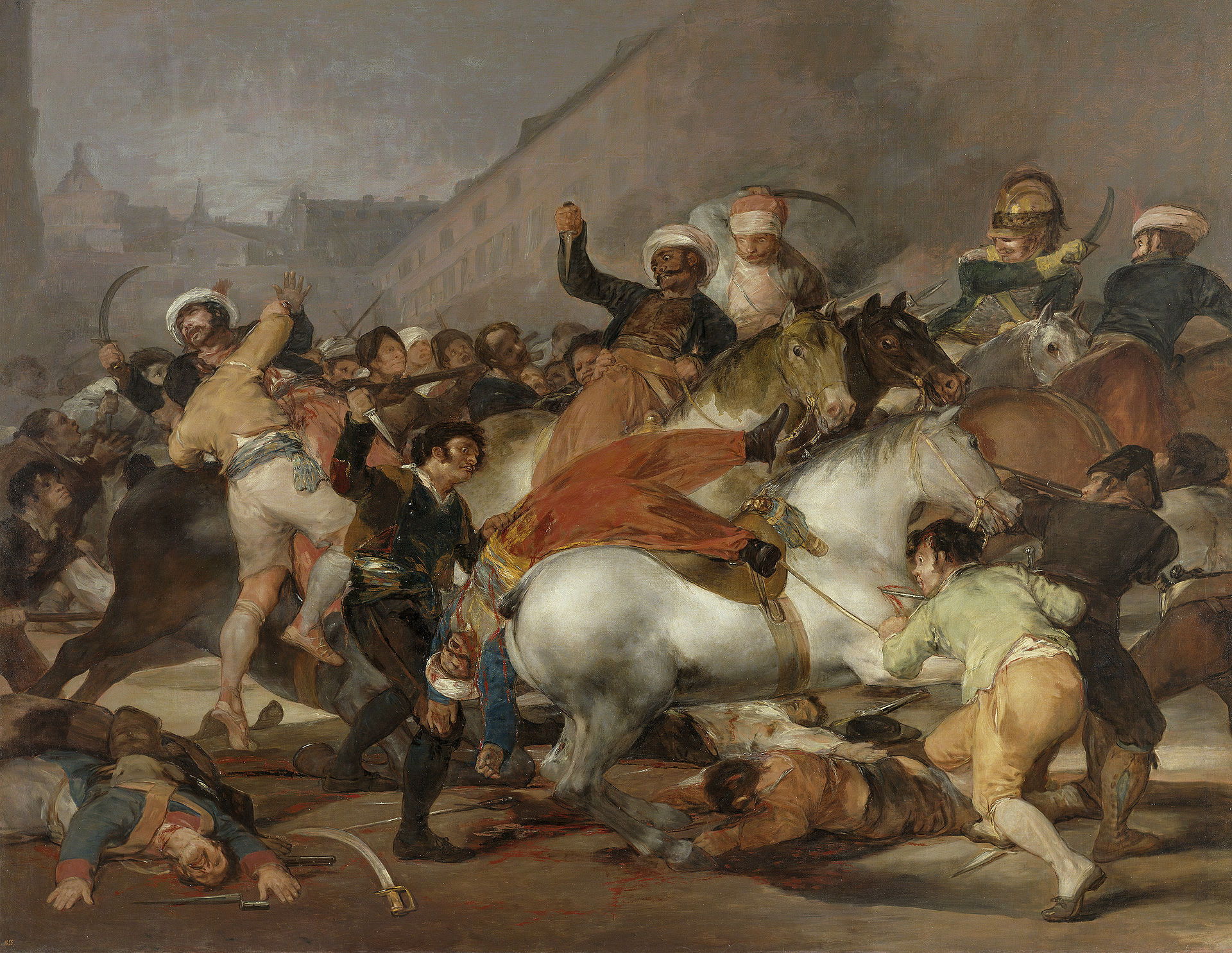

Comments are closed, but trackbacks and pingbacks are open.